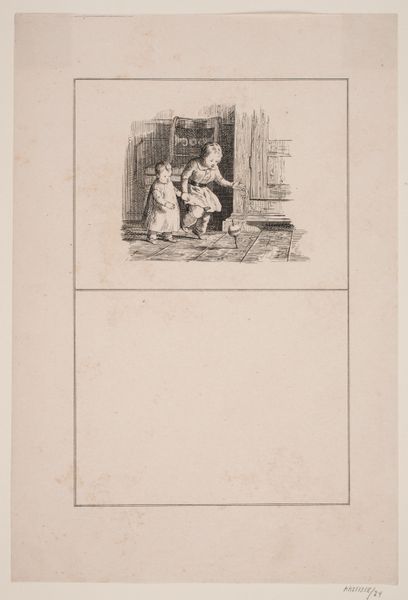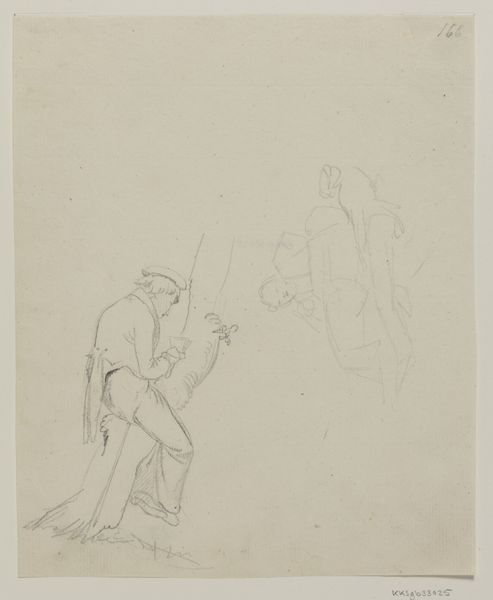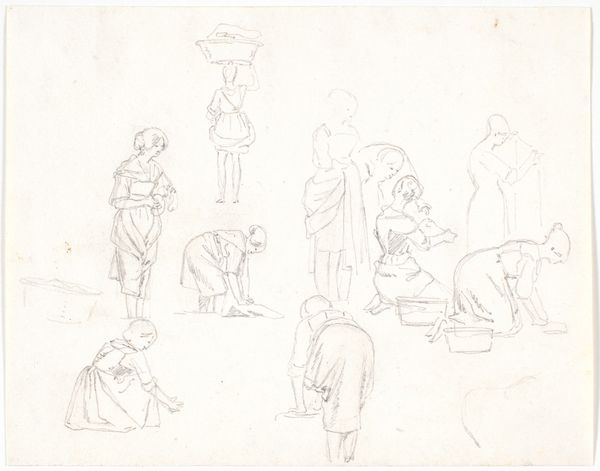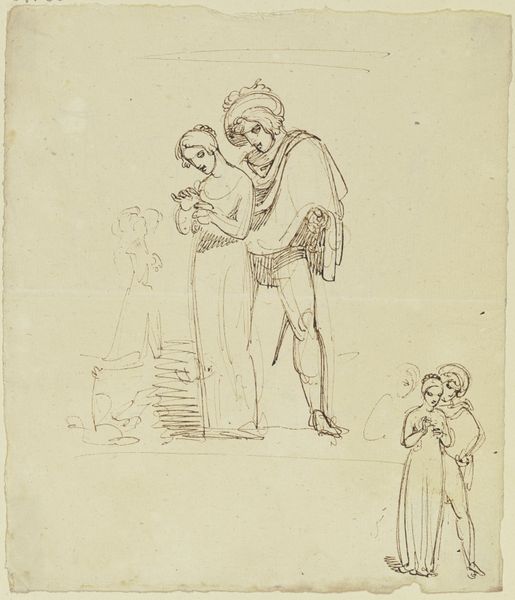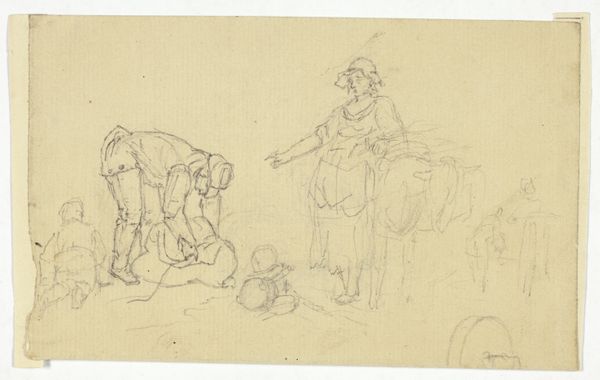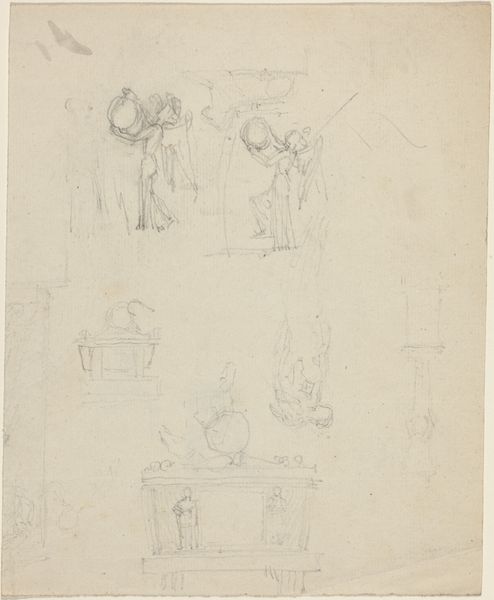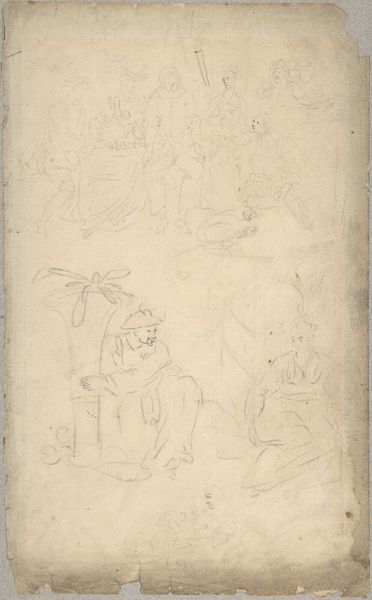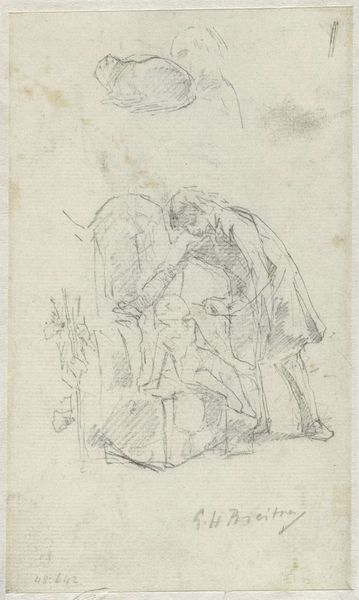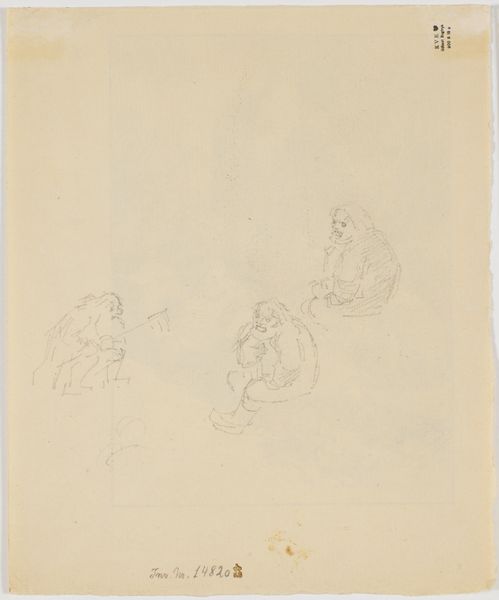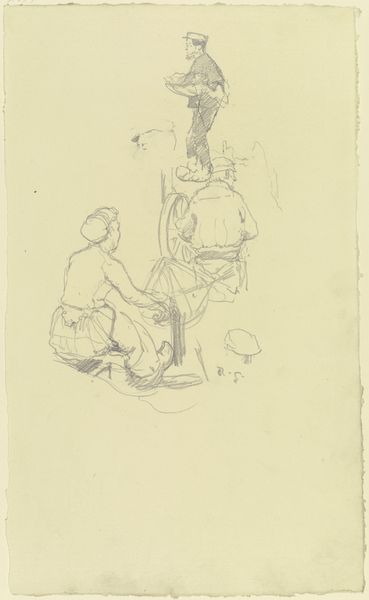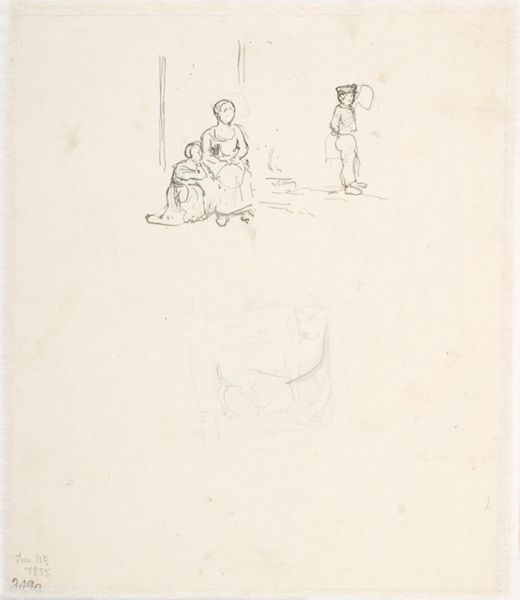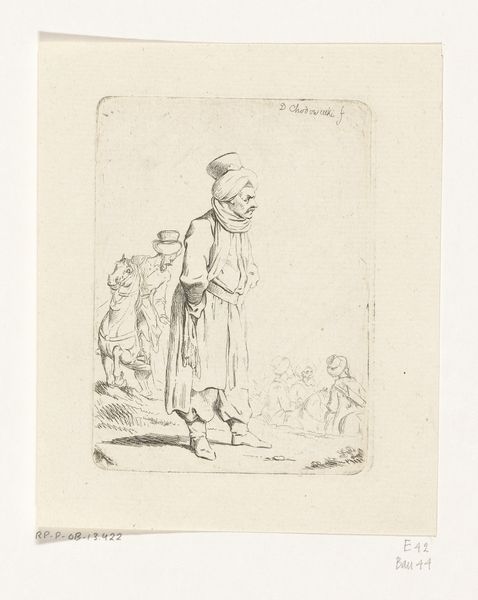
drawing, paper, pencil
#
portrait
#
drawing
#
dutch-golden-age
#
pencil sketch
#
paper
#
pencil
#
genre-painting
#
realism
Dimensions: height 396 mm, width 265 mm
Copyright: Rijks Museum: Open Domain
Editor: Here we have Philip Sadée's "Studieblad met vissers en vissersvrouwen," dating roughly between 1847 and 1904. It's a pencil drawing on paper, currently housed in the Rijksmuseum. It’s very light, a sketch-like quality that captures a fleeting moment. What jumps out to you about it? Curator: What I appreciate is the artist's capacity to delineate the human figure through an economy of line. Observe how Sadée articulates volume and form, relying on hatching and subtle tonal variations. The composition's fragmented quality emphasizes a study of individual forms rather than a cohesive narrative, a technique that encourages analysis of the materiality. The paper grain itself becomes an active element. What do you notice about the negative space? Editor: It does feel deliberate, leaving large empty areas to offset the detailed figures. It keeps the focus tightly on the subjects. There isn’t much depth created – they feel almost pasted on the page. Is there significance in its lack of a clear background? Curator: Precisely. It foregrounds the inherent qualities of the medium. The interplay between positive and negative space dictates the visual rhythm. Moreover, note how the varying pressure applied with the pencil generates different depths of field and textures within each figure, almost existing as self-contained units of visual information on the larger plane. Editor: I hadn't considered the pressure of the pencil as a distinct feature. It does add dimension to an otherwise flat work. So you're suggesting the focus is on the method and materials themselves as much as on the subject? Curator: Precisely. The visual data and technique create an interplay where observation of process supersedes narrative imperative. Sadée allows the drawing's structural components to take center stage, almost as performance, allowing viewers direct access to their process of material and form articulation. Editor: This has given me a completely different perspective. Now, the pencil marks speak louder than the figures themselves. Curator: Indeed, the drawing reveals a fascinating approach when considered purely for its aesthetic arrangement and technical processes.
Comments
No comments
Be the first to comment and join the conversation on the ultimate creative platform.
